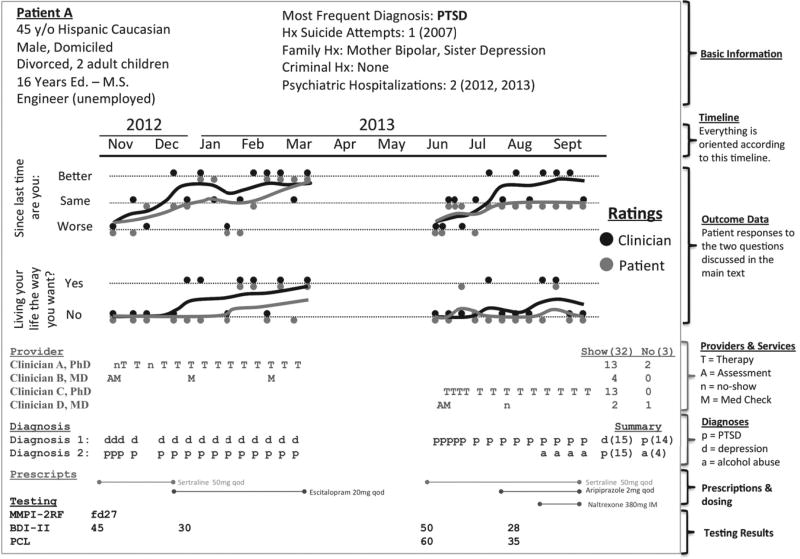Figure 1.
Prototype dashboard for an enhanced electronic medical recorda
a The dashboard is organized by month. In November 2012 this fictional patient was assessed (A) by Clinician B, given a medication evaluation (M), prescribed sertraline, diagnosed as having depression (d) and PTSD (p), and administered the Beck Depression Inventory (BDI-II) and Minnesota Multiphasic Personality Inventory (MMPI-2RF). The patient was then seen for depression by Clinician A. He did not attend his first appointment (n, no show) and engaged in therapy (T) around a week later. From November to March, he had diagnoses of depression and PTSD and experienced improvement (the running averages in the Outcome Data section increase over time for the two outcome measures). His BDI-II score decreased from 45 to 30. During that time, the medication was switched from sertraline to escitalopram. Despite ending treatment successfully in March, he was readmitted in June with prominent PTSD. His care was transferred to Clinician C, who provided psychotherapy, and Clinician D, who represcribed sertraline, eventually augmented with aripiprazole. The BDI-II was readministered, along with the PTSD Checklist (PCL). In August he was given a diagnosis of alcohol dependence (a) and given a naltrexone injection.

